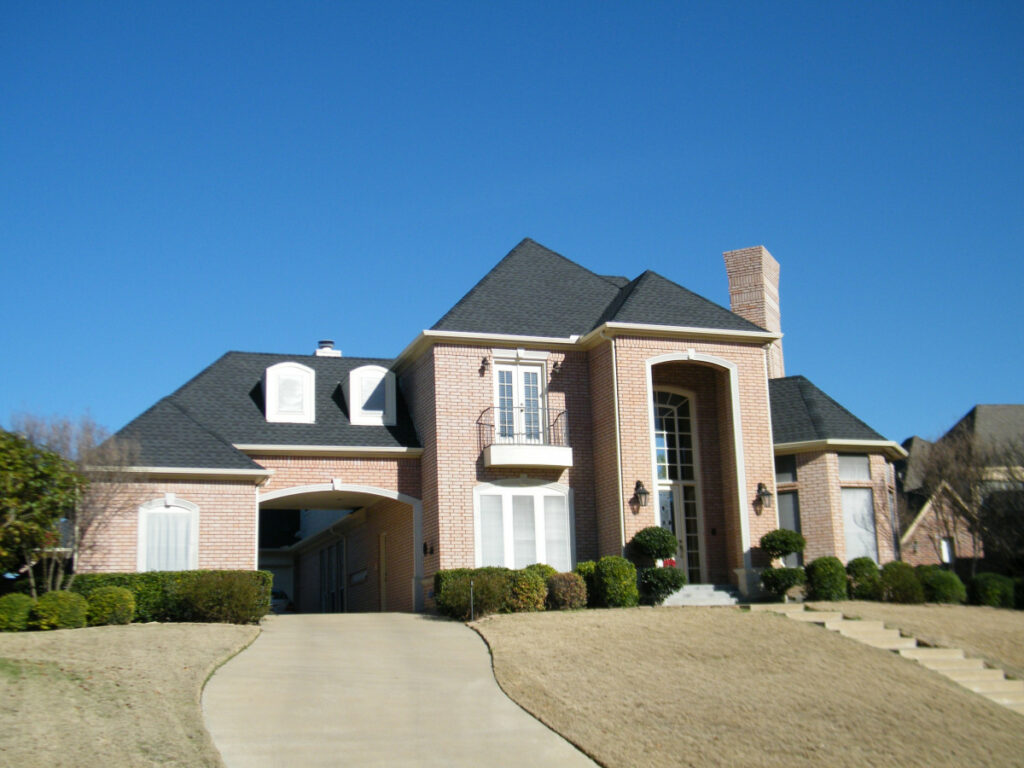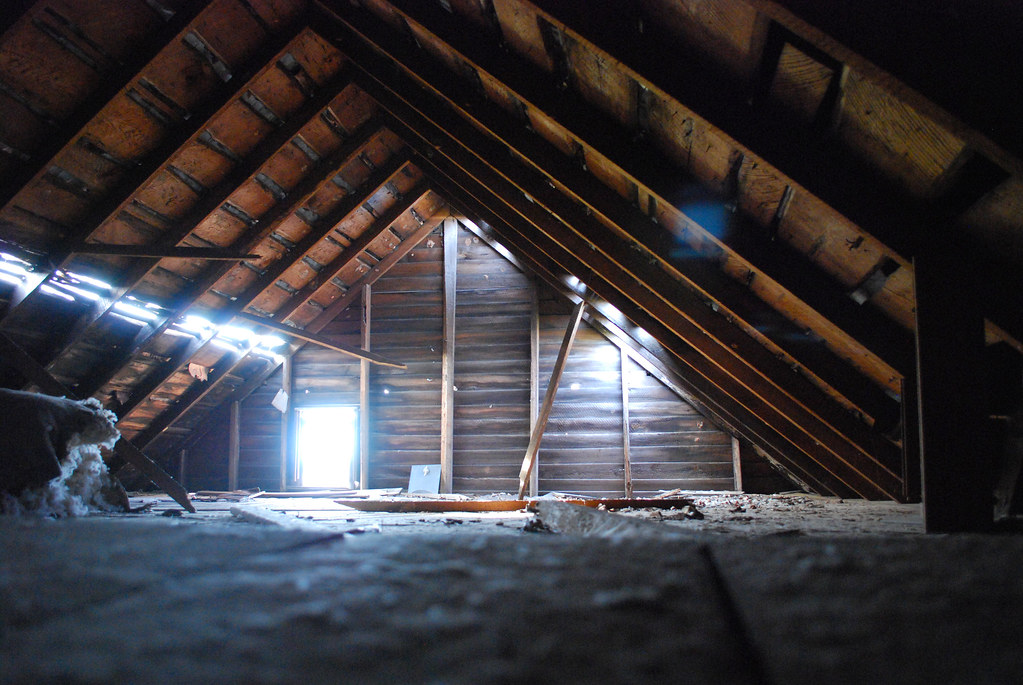The roof is the first line of defense against the rain, snow, wind, and the scorching heat of the sun. Attic ventilation, however, an often overlooked aspect of roof maintenance that plays a pivotal role in both energy efficiency and roof longevity. In today's post, we will explore the significance of roofing ventilation and how it contributes to energy efficiency and the overall lifespan of a roof.
Roofing ventilation is a key factor in maintaining a balanced and energy-efficient indoor environment. Without proper ventilation, attics and roof spaces can become hot and humid, especially during the summer months. This excessive heat can infiltrate the living spaces below and cause cooling systems to work harder to maintain a comfortable temperature. This increased demand for cooling not only leads to higher energy bills but also places additional stress on the unit and the system, which can shorten their lifespan.
By implementing effective roofing ventilation systems, hot air is allowed to escape and affect the temperature in the attic or roof space. This, in turn, lowers the overall temperature of the entire building. A cooler attic means less strain on air conditioning systems, decreases energy consumption and lowers utility bills.
In addition to temperature control, roofing ventilation plays a crucial role in managing moisture levels within the roof and attic spaces. Without adequate ventilation, moisture can accumulate and lead to mold growth, wood rot, and damage to insulation materials. Moisture-laden environments not only compromise the structural integrity of the roof but also contribute to poor indoor air quality, posing health risks to the occupants.
Effective ventilation systems facilitate the movement of air and let excess moisture escape. This prevents the buildup of humidity that encourages the growth of mold and mildew growth. With an excellent roofing ventilation, you'll have a healthier living environment, protecting both the occupants and the structural components of the building.

Proper roofing ventilation significantly extends the lifespan of the roof by preventing a range of issues that can compromise its integrity. Excessive heat and moisture can lead to the deterioration of roofing materials and cause shingles to warp, crack, or curl. In colder climates, inadequate ventilation can contribute to the formation of ice dams that can lead to water infiltration and damage.
Furthermore, the constant expansion and contraction of roofing materials due to temperature fluctuations can cause premature aging and reduce the roof's overall lifespan. Ventilation systems help regulate temperature and moisture, minimizing the impact of these environmental factors on the roof's structural components. By addressing these issues, roofing ventilation acts as a proactive measure to enhance the durability and longevity of the entire roofing system.
If you need a quick inspection or full improvement of your attic's ventilation, you can always count on SJ Winn Construction to help you. We're a reliable and dependable roofing company that's GAF-certified and can handle attic problems with ease. Call us today to know more about our services.
When it comes to maintaining a comfortable and durable home, many homeowners tend to focus on visible aspects such as flooring, paint colors, and furniture. However, one critical yet often overlooked area that plays a significant role in the overall health of a house is attic ventilation. Proper attic ventilation is essential for maintaining comfortable indoor temperatures, preventing moisture-related issues, and extending the lifespan of your home. In this post, learn about why you should always have excellent attic ventilation.
Attic ventilation is a key component in controlling the temperature within your home. During the hot summer months, without adequate ventilation, the trapped heat can accumulate in the attic and radiate down into living spaces, making your home uncomfortably warm. This heat buildup can strain your air conditioning system, leading to higher energy bills and reduced cooling efficiency. Conversely, during the colder months, proper attic ventilation helps prevent the formation of ice dams by allowing cold air to circulate, reducing the risk of water damage and potential roof leaks.
Another critical aspect of attic ventilation is managing moisture levels. Without proper airflow, moisture can accumulate in your attic, leading to mold growth, rotting of wooden structures, and damage to insulation. Excessive moisture can compromise the structural integrity of your roof, decrease energy efficiency, and pose health risks to your family. By ensuring proper ventilation, you can effectively control moisture levels, allowing for the quick evaporation of any excess moisture and preventing potential issues.
A well-ventilated attic helps preserve the longevity of your roof. High temperatures and excessive moisture can accelerate the deterioration of roofing materials, leading to premature aging and the need for costly repairs or replacements. By maintaining a balanced airflow, attic ventilation helps regulate temperature and moisture, reducing the strain on your roof and extending its lifespan.

Proper attic ventilation plays a significant role in enhancing energy efficiency within your home. By allowing hot air to escape during summer and preventing the buildup of moisture during winter, you can reduce your reliance on heating and cooling systems. This results in lower energy consumption and utility bills. Attic ventilation works in conjunction with insulation to create a more efficient thermal barrier, reducing heat transfer between the attic and living spaces.
Attic ventilation contributes to better indoor air quality by removing stagnant air and preventing the buildup of pollutants. It helps to exhaust harmful gases, volatile organic compounds (VOCs), and odors that may accumulate in the attic. Moreover, proper ventilation prevents the accumulation of allergens and contaminants that can be transported into your living spaces through leaks or air ducts, promoting a healthier environment for your family.
You'll want to work with an excellent roofing company that understands your roof's needs, is familiar with the local weather, and help you with all your roofing needs. If you have yet to find a roofer you can trust, you can count on us at SJ Winn Construction. We're a GAF Master Elite company that can install your roofs excellently and within the manufacturer's warranty. Call us today to learn more.
The attic is the space between your roof and the rooms of your home. It houses the trusses, sheathing, and other structural components supporting your asphalt shingles or metal roof. That said, it needs proper ventilation to ensure the materials don't expand and deform. Good ventilation prevents mold growth that eats away at the wood materials. Learn more about attic ventilation in this post.
Attic ventilation is typically a part of your roof system's design. Vents are positioned below the fascia and eaves to let fresh air enter. Then, builders can include a ridge vent to decrease humidity by allowing its escape. Continuous fresh air intake and hot air expulsion create stable temperatures, reduce energy consumption, and decrease the risk of mold growth.
Structural misalignment often happens because the sheathing and rafters expand and contract due to extreme heat or cold. By letting trapped air escape, you won't have any risk of structural misalignment. Furthermore, your asphalt shingles won't expand and split because the attic has stable temperatures.
Mold colonies grow in dark and damp environments. Heat trapped in the attic will cause mold growth as moisture descends on the entire system. With excellent ventilation, the attic would not have mold growth because it is dry and has fresh air that decreases humidity.
Good window insulation and ventilation reduce your energy bills. Your rooms will have stable temperatures at nominal HVAC settings. Make sure to have roofers check your insulation and upgrade your insulation and ventilation where necessary.

Attic ventilation must be compatible with the roof's shape and introduce enough fresh air to maintain comfortable interior temperatures. Here are several ways to design an effective attic vent system.
Determine the heat level of your home. You can have a roofer inspect and measure the temperature in the attic. Alternatively, you can touch your ceiling – if it feels extremely hot, your attic ventilation needs improvements.
The formation of ice dams occurs due to imbalances in your attic's temperature. Good air ventilation keeps your attic temperatures consistent, letting melted water flow freely to your gutters without forming ice dams.
Ridge or peak vents let hot air rise and escape from your attic. While typical vents can let air escape from two soffit vents, a ridge peak vent uses hot air's natural movement for efficient heat dissipation. Furthermore, they improve soffit vent performance by pulling in more fresh air as hot air rises.
These standard vents let outside air enter the attic and are its main source of ventilation. You can use a rectangular soffit vent with wood beam openings or a continuous vent from the soffit to your attic area.
Gable vents have controllable openings to let hot air escape. They're optional vents for most roofs, but homes with poor intake can add gale vents for improved performance.
Fans help improve attic air circulation. They can have temperature sensors for automated functionality, but switch-operated motorized fans are practical and reliable if you don't have the budget.
SJ Winn Construction is a renowned roofer in your local area with decades of experience and knowledge of roof installations, replacements, and installations. Your neighborhood trusts our quality of work and approachable team to help with their roofing needs. Call us today to learn more.
156 Torrington Rd., Winsted,
Connecticut 06098
Phone: 860-379-8863
Email: sjwinnconstruction@gmail.com